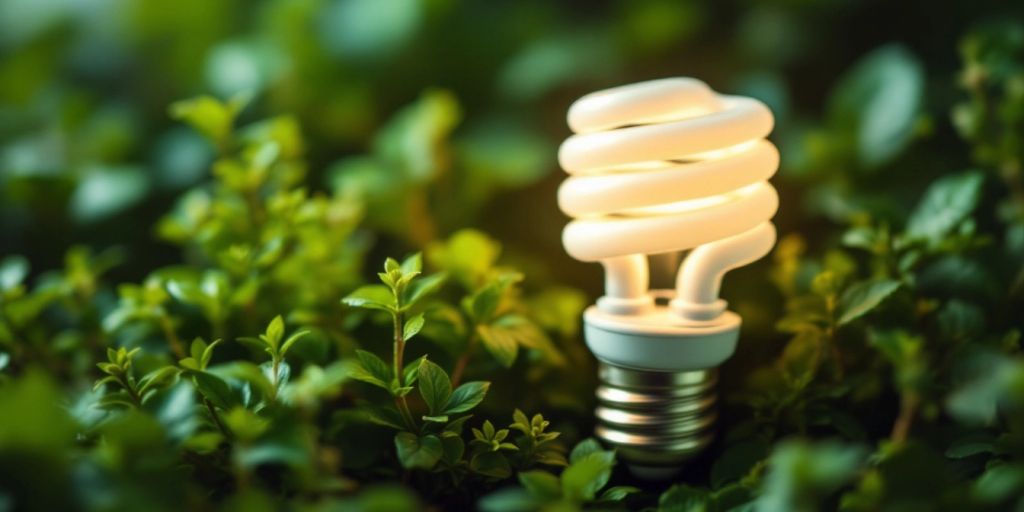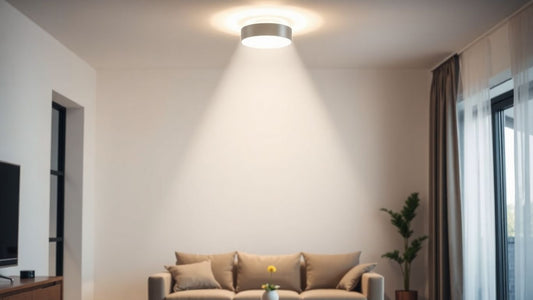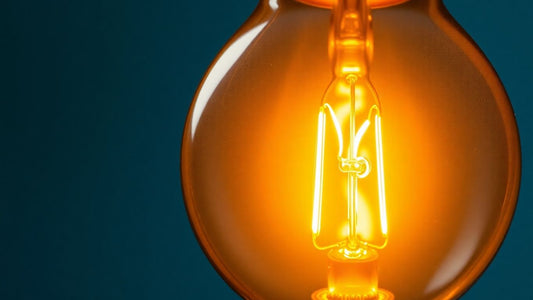The Ultimate Guide to CFL Light Bulbs: Energy Efficiency and Cost Savings
CFL light bulbs, or compact fluorescent lamps, are a popular choice for energy-efficient lighting. They have evolved significantly since their introduction in the 1980s, becoming more effective and widely used. This guide will explore the benefits of CFLs, how they compare to other lighting options, and tips for choosing and maintaining them. Understanding CFLs can help you make informed decisions about your lighting needs, saving you money and energy in the long run.
Key Takeaways
- CFLs use about 70% less energy than traditional incandescent bulbs, making them a cost-effective choice.
- They have a longer lifespan, lasting between 8,000 to 20,000 hours compared to only 1,000 hours for incandescent bulbs.
- CFLs are generally cheaper than LEDs, providing a budget-friendly option for energy-efficient lighting.
- Proper installation and maintenance can extend the life of CFL bulbs, ensuring you get the most out of your investment.
- There are common misconceptions about CFLs, such as concerns over their mercury content and warm-up time, which have been addressed by advancements in technology.
Understanding CFL Light Bulbs
What Are CFL Light Bulbs?
CFL stands for compact fluorescent lamp. These light bulbs are designed to be energy-efficient and are made from glass tubes filled with gas and a small amount of mercury. When electricity flows through the bulb, it excites the mercury, producing ultraviolet light. This light then interacts with a phosphor coating inside the bulb, creating visible light. CFLs are a popular choice for those looking to reduce their energy consumption while still enjoying bright illumination.
How Do CFL Light Bulbs Work?
CFLs operate differently from traditional incandescent light bulbs. Here’s a simple breakdown of their functioning:
- Electricity flows through the electrodes at the base of the bulb.
- This current excites the mercury gas, causing it to emit ultraviolet light.
- The ultraviolet light hits the phosphor coating, which converts it into visible light.
CFLs are available in various shapes and sizes, making them suitable for different light bulb socket types. For example, you can find E14 bulbs that are compact and perfect for smaller fixtures.
History of CFL Light Bulbs
CFLs were first introduced in the 1980s as a more energy-efficient alternative to incandescent bulbs. Over the years, their design and efficiency have improved significantly. Initially, they faced challenges such as slow warm-up times and a cooler light colour, which made them less popular. However, advancements in technology have led to better performance, including faster warm-up times and warmer colour temperatures, making them a viable option for many households today.
CFL light bulbs are a great way to save energy and reduce electricity bills. They typically last much longer than traditional bulbs, making them a smart choice for bulb replacement.
In summary, CFL light bulbs are an excellent option for those looking to save on energy costs while still enjoying quality lighting. They are available for purchase in various forms, including E14 light bulbs and other types, making it easy to find the right fit for your needs.
Benefits of Using CFL Light Bulbs
Energy Efficiency of CFL Light Bulbs
CFL light bulbs are known for their energy efficiency. They use about 70% less energy than traditional incandescent bulbs. This means that by switching to CFLs, you can significantly reduce your electricity bills.
| Type of Bulb | Watts Used | Average Lifespan | Cost per Bulb | Total Cost Over 20 Years |
|---|---|---|---|---|
| Incandescent | 60W | 1,200 hours | $1 | $211 |
| CFL | 14W | 8,000 hours | $2 | $54 |
| LED | 7W | 25,000 hours | $4 | $34 |
Cost Savings with CFL Light Bulbs
Switching to CFLs not only saves energy but also leads to cost savings. Over time, the lower energy consumption translates into lower electricity bills. Here are some key points:
- CFLs last longer than incandescent bulbs, reducing the need for frequent replacements.
- The initial cost of CFLs is generally lower than that of LEDs, making them a budget-friendly option.
- Many utility companies offer rebates for using energy-efficient light bulbs, further enhancing savings.
Environmental Impact of CFL Light Bulbs
CFLs are also better for the environment. By using energy-efficient light bulbs, you help reduce greenhouse gas emissions. Here are some environmental benefits:
- Lower energy consumption means less fossil fuel burning for electricity.
- CFLs have a longer lifespan, which means fewer bulbs in landfills.
- They produce less heat, reducing the need for air conditioning in warmer months.
By choosing CFL light bulbs, you are making a positive impact on both your wallet and the planet.
In summary, the benefits of using CFL light bulbs include energy efficiency, cost savings, and a positive environmental impact. Making the switch can lead to significant advantages for both your home and the environment.
Comparing CFL Light Bulbs to Other Lighting Options
When it comes to choosing the right lighting for your home, CFL light bulbs offer a unique balance between efficiency and cost. Here, we will compare CFLs with other popular lighting options: incandescent, halogen, and LED bulbs.
CFL vs Incandescent Bulbs
- Energy Use: CFLs use about 70% less energy than incandescent bulbs.
- Lifespan: A typical CFL lasts around 8,000 hours, while incandescent bulbs last only about 1,200 hours.
- Cost: CFLs are generally more expensive upfront, averaging around £2, compared to incandescent bulbs which can be found for under £1.
| Feature | CFL | Incandescent |
|---|---|---|
| Average Lifespan | 8,000 hours | 1,200 hours |
| Energy Consumption | 14W | 60W |
| Average Cost | £2 | £1 |
CFL vs Halogen Bulbs
- Efficiency: CFLs are more energy-efficient than halogen bulbs, which consume more power for the same light output.
- Heat Emission: Halogen bulbs emit more heat, making them less efficient in terms of energy use.
- Lifespan: CFLs last significantly longer than halogen bulbs, which typically last around 2,000 hours.
CFL vs LED Bulbs
- Energy Efficiency: LEDs are the most efficient, using about 75% less energy than incandescent bulbs, while CFLs use about 25% less.
- Lifespan: LEDs can last over 25,000 hours, making them the longest-lasting option.
- Cost: While LEDs are more expensive upfront (around £4), they save more money in the long run due to their efficiency.
| Feature | CFL | LED |
|---|---|---|
| Average Lifespan | 8,000 hours | 25,000+ hours |
| Energy Consumption | 14W | 7W |
| Average Cost | £2 | £4 |
In summary, while CFLs are a great option for energy savings and cost efficiency, LEDs are the superior choice for longevity and overall efficiency. When considering your options, refer to light bulb reviews and comparisons to make an informed decision. Always check the light bulb buying guide to ensure you choose the best fit for your needs.
Choosing the Right CFL Light Bulb for Your Needs

When it comes to selecting the perfect CFL light bulb, there are several factors to consider to ensure you make the best choice for your home or office. Here are some key points to keep in mind:
Different Types of CFL Light Bulbs
- Spiral CFLs: These are the most common type and fit into standard light fixtures.
- 2D CFLs: Ideal for slim fittings, they provide a lot of light and are often used in commercial settings.
- CFL Candles: These are designed for decorative fixtures and emit a soft light.
Factors to Consider When Buying CFL Light Bulbs
- Wattage: Choose a bulb that offers the right brightness for your needs. A lower wattage means less energy consumption.
- Colour Temperature: CFLs come in various colour temperatures, from warm white to cool daylight. Select one that suits your space.
- Dimmability: Not all CFLs are dimmable, so check if you need this feature for your lighting setup.
Where to Buy CFL Light Bulbs
You can find CFL light bulbs at various retailers, including:
- Local hardware stores: They often have a selection of different types.
- Online marketplaces: Websites like Amazon offer a wide range of options.
- Specialty lighting shops: These stores may provide more unique or high-quality CFLs.
Remember, choosing the right CFL light bulb can lead to significant energy savings and a more comfortable lighting experience in your space.
For example, you can explore our R7S collection featuring various products, including LED bulbs priced between £13.00 and £14.00. Enjoy free shipping on all orders, 24/7 support, and a 14-day return policy. Secure payment options are available!
Maximising the Lifespan of Your CFL Light Bulbs
Proper Installation of CFL Light Bulbs
To ensure your CFL light bulb lifespan is maximised, proper installation is crucial. Here are some tips:
- Choose the right base: Make sure to select the correct base type, such as E27, E14, or B22, for your fixture.
- Avoid damp areas: CFLs are not ideal for wet locations unless specified as suitable for such use.
- Secure fitting: Ensure the bulb is securely fitted to avoid flickering or damage.
Maintenance Tips for CFL Light Bulbs
Regular maintenance can help extend the life of your CFLs. Consider the following:
- Clean the bulbs: Dust and dirt can reduce light output. Gently wipe the bulbs with a soft cloth.
- Turn off when not in use: Frequent on-off cycling can shorten the E27 bulb lifespan. Turn off lights when leaving a room.
- Use in appropriate fixtures: Ensure your fixtures are compatible with CFLs to avoid overheating.
Safe Disposal of CFL Light Bulbs
CFLs contain a small amount of mercury, so proper disposal is essential:
- Recycling centres: Take used bulbs to a recycling centre that accepts hazardous waste.
- Local guidelines: Check local regulations for specific disposal instructions.
- Avoid regular trash: Never throw CFLs in the regular bin to prevent environmental harm.
Remember, taking care of your CFLs not only saves money but also helps the environment. Using energy-efficient bulbs like the G95 G125 ST64 4W dimmable E27 smoky grey retro edison lamp can save over 90% on electricity bills and last up to 20,000 hours!
Common Myths About CFL Light Bulbs
Myth: CFLs Are Harmful Due to Mercury Content
Many people worry about the mercury in CFLs. While it’s true that CFLs contain a small amount of mercury, the amount is very low. When used properly, the risk is minimal. Moreover, recycling programmes are available to ensure safe disposal. Here are some key points:
- CFLs contain about 4-5 milligrammes of mercury.
- This is significantly less than older thermometers, which can contain up to 500 milligrammes.
- Proper disposal can prevent environmental harm.
Myth: CFLs Take Too Long to Warm Up
Another common belief is that CFLs take too long to reach full brightness. While it’s true that they may take a moment to warm up, many modern CFLs are designed to light up faster than older models. In fact, most CFLs reach about 80% brightness within a minute. Here’s a quick comparison:
| Bulb Type | Warm-Up Time |
|---|---|
| CFL | 1-2 minutes |
| Incandescent | Instant |
| LED | Instant |
Myth: CFLs Are Not as Bright as Other Bulbs
Some people think CFLs are dim compared to incandescent or LED bulbs. However, CFLs can produce a similar amount of light while using much less energy. The brightness of a bulb is measured in lumens, and many CFLs offer a range of lumens that can match or exceed traditional bulbs. Here’s a simple guide:
- A 13W CFL can replace a 60W incandescent bulb, providing similar brightness.
- A 23W CFL can replace a 100W incandescent bulb.
- Always check the lumens rating when buying bulbs.
In summary, understanding the facts about CFLs can help you make informed choices about your lighting needs.
Future of CFL Light Bulbs

Technological Advancements in CFL Light Bulbs
The future of CFL light bulbs looks promising due to ongoing technological advancements. Manufacturers are working on improving the efficiency and performance of these bulbs. Some key developments include:
- Enhanced energy efficiency, reducing power consumption even further.
- Faster warm-up times, allowing bulbs to reach full brightness quickly.
- Improved designs that minimise the use of hazardous materials, making them safer for the environment.
Market Trends for CFL Light Bulbs
As the market evolves, CFL light bulbs are adapting to new consumer preferences. Here are some trends to watch:
- Increased demand for eco-friendly light bulbs that are both efficient and sustainable.
- A shift towards smart lighting solutions, integrating CFLs with smart home technology.
- Competitive pricing as manufacturers strive to make CFLs more affordable compared to LEDs.
Potential Challenges for CFL Light Bulbs
Despite their advantages, CFL light bulbs face several challenges:
- Competition from LEDs, which are becoming more popular due to their longer lifespan and lower energy use.
- Consumer misconceptions about the safety and efficiency of CFLs, particularly regarding their mercury content.
- Regulatory changes that may impact the production and sale of CFLs in favour of more sustainable options.
The future of CFL light bulbs will depend on their ability to innovate and meet the changing needs of consumers while remaining a viable option in the lighting market.
CFL light bulbs are set to change the way we light our homes in the future. With their energy-saving features and longer lifespan, they are becoming a popular choice for many households. As technology advances, we can expect even better options that are more efficient and environmentally friendly. If you're curious about the latest in lighting solutions, visit our website for more information and to explore our range of products!
Conclusion
In summary, switching to CFL light bulbs is a smart choice for both your wallet and the environment. These bulbs use much less energy than traditional incandescent bulbs, which means lower electricity bills. They also last a lot longer, so you won't need to replace them as often. While they might take a little time to warm up, the soft light they provide can make your home feel cosy. By choosing CFLs, you are not only saving money but also helping to reduce your carbon footprint. So, if you haven't made the switch yet, now is the perfect time to do so!
Frequently Asked Questions
What exactly are CFL light bulbs?
CFL stands for compact fluorescent lamp. These bulbs are designed to be energy-efficient and use less electricity compared to traditional incandescent bulbs.
How do CFL bulbs function?
CFL bulbs work by sending electricity through a gas-filled tube. This creates ultraviolet light, which then makes a special coating inside the bulb glow, producing visible light.
When were CFL bulbs first introduced?
CFLs came onto the market in the 1980s, but they didn't become popular until improvements were made in their design and light quality.
What are the main advantages of using CFL bulbs?
CFL bulbs consume about 70% less energy than incandescent bulbs, last much longer, and can help you save money on your electricity bills.
Are there any downsides to CFL bulbs?
Yes, CFL bulbs can take a little time to reach full brightness, and they are not dimmable like some other types of bulbs.
How should I dispose of CFL bulbs?
CFL bulbs contain a small amount of mercury, so it's important to recycle them properly. Many local recycling centres accept them.



